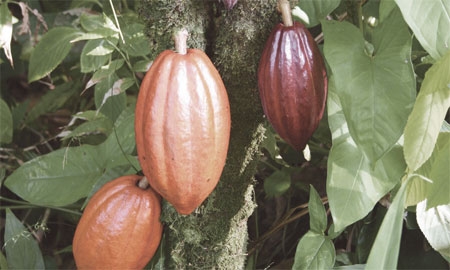Cocoa beans were used by the Native Americans to prepare a chocolate drink and also as a form of currency for trading purposes. After the conquest of Central America in 1521, Hernan Cortes and his Conquistadores took a small cargo of cocoa beans to Spain in 1528, together with utensils for making the chocolate drink.
By 1580, regular consignments of cocoa were being shipped to Spain. The popularity of chocolate as a drink spread quickly throughout Europe, reaching Italy in 1606, France in 1615, Germany in 1641 and the U.K. in 1657.
The Spanish started large-scale cultivation of cocoa in Central America in the 16th century. It spread to the British, French and Dutch West Indies (Jamaica, Martinique and Surinam) in the 17th century, and to Brazil in the 18th century.
From Brazil, cocoa was taken to São Tome and Equatorial Guinea in 1840, and from there to other parts of West Africa, notably the Gold Coast (now Ghana), Nigeria and Côte d’Ivoire.
Records indicate that Dutch missionaries planted cocoa in the coastal areas of Ghana as early as 1815, whilst in 1857 Basel missionaries also planted cocoa at Aburi.
However, these did not result in the spread of cocoa cultivation until Tetteh Quarshie, a native of Accra who had traveled to Equatorial Guinea for work, returned in 1879 with Amelonado cocoa pods and established a farm in the Eastern Region.
Farmers bought pods from his farm to plant and cultivation spread to other parts of the country.

0 COMMENTS